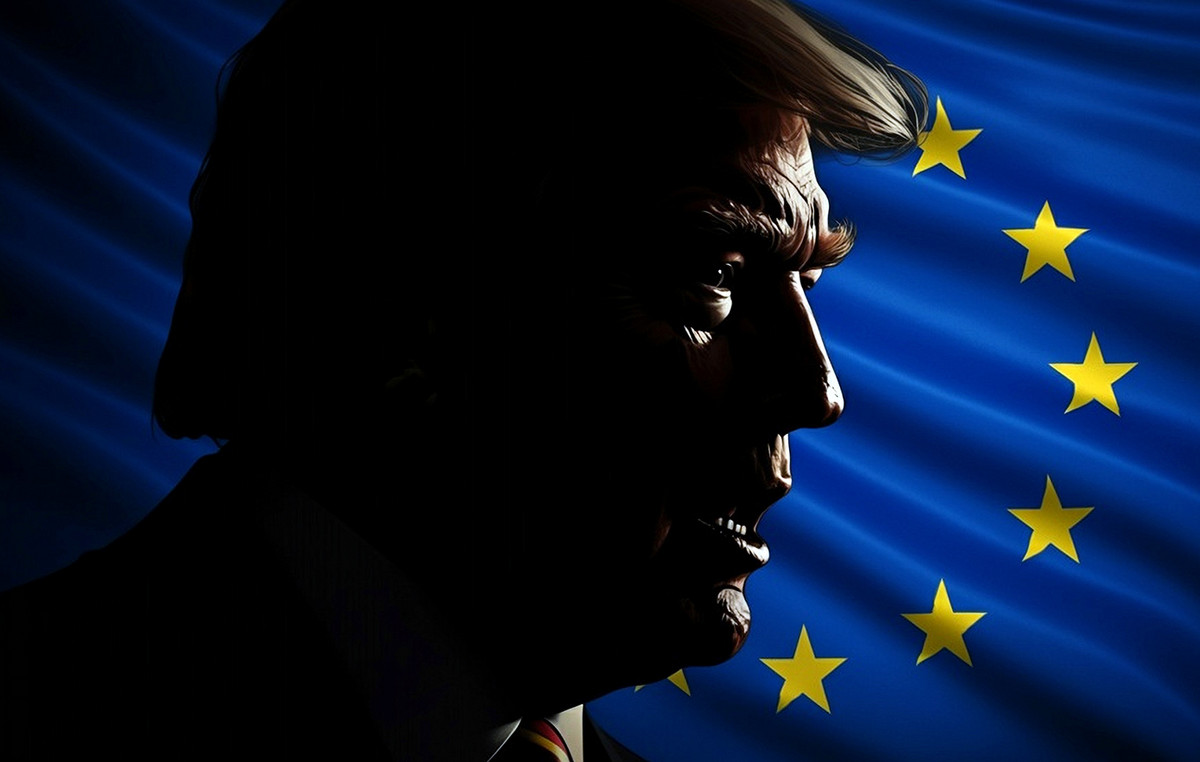The Foreign Trade Index (Icomex) of the FGV in September brought two different scenarios. On the one hand, exports from commodities reached the highest level of the historical series, almost 70% of everything that was sent abroad was of this type of product.
But it also means that the industry transformation reached the lowest level, reflecting a loss of space that has occurred in recent decades.
In addition, soy, oil and iron ore account for more than 40% of exports, which means that even products linked to higher value-added commodities, which go through some industry, lost space. This is the case with orange juice, sugar and pig iron.
André Rebelo, executive director of economics and strategy at fiesp, states that, today, 37% of exports Commodities are actually semi-manufactured goods. In other words, the commodity goes through some type of industry, adding more value. This is the case of cellulose, tobacco, leather, shoes and a part of iron ore.
According to him, the industry linked to this sector, often called agribusiness but which also involves mining, gained ground from the 2000s onwards at the expense of the industry that produces manufactured goods.
Commercial opening and exchange rate variations
For Rebelo, the advance of the industry linked to commodities and the loss of space in the transformation segment occurred mainly between 2006 and 2015. “It was a period of strong exchange rate appreciation, and close to other periods of appreciation,” he says.
The appreciation exchange rate it took place at a time when production costs intensified and wages rose, which encouraged a shift towards agricultural or mineral goods or finishing products with imported inputs. Added to this was the proximity of prices between imported and domestic products, harming the local industry.
Data from Fiesp show that, before 2005, 50% of the value of a product was added locally. Today, it is 30% of the total. The appreciated exchange rate ended up leading to what Rebelo calls “input substitution”, from the local to the foreign.
“If you think about coherence, the devalued exchange rate, like the one now, would have the opposite effect, but it is still not enough. The exchange rate alone is enough to spoil it, but not to recover the lost space”, he says.
The director points out a technological gap in the industry, which is also hampered by a worsening macroeconomic environment. The devaluation of the real took place in a context of crisis, that is, with low demand and recession. According to him, the industry “never recovered the level of 2014”.
Dante Mendes Aldrighi, professor at FEA-USP, says that the peak of the participation of the manufacturing industry in the START (Gross Domestic Product) occurred in the 1980s. Since then, it has fallen, as well as job generation.
“The debate that is taking place is whether Brazil is undergoing deindustrialization, as the service sector represents more than 70% of employment in the country today”, he says.
According to the professor, the loss of space for the industry and gain for the service sector is a common process in rich countries. “But isn’t this deindustrialization premature, precocious? Does it occur before Brazil is a richer economy?”.
He claims that the jobs in the service sector they still do not involve a high level of qualification, and are linked to informal work and odd jobs, with low pay.
For Aldrighi, “the standard of living has not risen to the point that this sector has greater weight, the number of workers with low pay and qualifications is still very high, which harms economic growth.”
Another important aspect of the loss of space for Brazilian industry was the competition with other industries when there was a trade opening in the 1990s, with a reduction in taxes on imports. Many were unable to make the necessary investments to compete, especially in technology, and closed their doors.
From that decade on, the China entered with more force in the manufacturing market, along with other Asian countries, which became rivals of Brazil. “In general, China’s entry into this area was a global shock, it had repercussions in several countries, including Brazil, with a drop in employment in manufacturing, a reduction in the sector”, he says.
At the same time, it is China the big consumer of commodities that Brazil currently exports, including semi-manufactured products. “In the Brazilian case, the expansion of the share of exports of commodities and related goods increased, with a retraction of the manufacturing industry since the 1990s”.
The professor considers that the Brazilian industry was not able to respond to this scenario through innovation, which led to a stagnation in productivity, something in contrast to the rest of the world.
“The commodity sector has more space is good, but it is important to have a more diversified production structure, to avoid all this dependence on primary and semi-manufactured products”, he says.
Its consequences
For Luciano Nakabashi, professor at FEA-RP-USP, the main negative point of the expansion of the industry linked to the farming and to mining is that they generate products with little added value and, in general, fewer jobs and with lower wages than the manufacturing industry.
“On the other hand, there is little industry competitiveness, we have an industry historically built as large, which generated much more products than today and jobs too, and with this reopening process, less encouraging the industry, abandoning the idea of import substitution, the industry lost participation”, he says.
The replacement of import it was an industrial policy that emerged at the end of the first half of the 20th century. The idea would be to encourage local industry to produce what was imported, reducing trade deficits, benefiting the economy and generating more jobs.
Thus, a key aspect of import substitution would be investing in the manufacturing industry, and the technology it demands.
“We can consider that the few countries that developed in the last 40, 50 years, built on industrialization, a growth in the manufacturing industry, Japan and South Korea are the great examples”, says Dante Aldrighi.
According to the professor, this process occurs because the industry attracts workers from sectors with lower productivity, and has higher productivity, which in itself helps to increase economic growth.
Manufacturing also favors what the professor calls “backward and forward demand,” that is, its growth benefits both its suppliers and production vendors.
“Furthermore, the manufacturing industry has the characteristic that its technological advances spread throughout society, that is, they favor other sectors. If the country exports manufactures, it also needs to be in line with good global technological practices, which encourages innovation”, he says.
He claims, however, that this scenario depends on the economic situation of a country. Currently, Brazil is facing a series of uncertainties that, for the professor, “generate an unfavorable environment for economic development”.
The scenario of loss of space in the industry, with closures, is mixed with a lack of innovation strategy and a high import tax, especially of machinery, which would limit the benefits that the sector can bring.
But this does not mean that the commodity-related industry does not benefit society. The executive director of Fiesp says that, in general, the main advantage of the segment is the high profitability, in addition to generating resources for economic growth.
“But we needed an industrial policy to thicken these chains, make machines for extracting oil, ore, and processing soy. Exporting more products with more added value, more added work, and generating more income and employment”, he says.
Opportunities
André Rebelo states that the main opportunity the industry has today is to improve its capacity to process the most basic goods that are produced in large quantities.
“It is also necessary to invest in the industry that is consumed by these most basic goods, incorporating technology. Farms today are almost open-air factories, they have a lot of technology, and we need to develop these segments”, he says.
Even with the loss of space for the industry, he sees today an “open avenue to thicken segments”. However, he says that this requires incentives to the sectors, in addition to improving the conditions of competition with the international market.
In Nakabashi, it is possible to increase the production and export of agribusiness and import what is not produced or from areas where the country is not competitive. The two moves would help alleviate the exchange rate issue.
“The import substitution strategy did not work, the industry has to specialize in what is already competitive,” he says.
According to the professor, today the industrial sector is more impacted by the so-called “Brazil cost” than by the exchange rate issue itself. The term refers to deficiencies in infrastructure, lack of qualified labor, complex and high tax burden and lack of stability in the rules for the economy.
“What I think is missing in the Brazilian case is to create conditions for other sectors to flourish, more important than exemptions, tax expenses, is to create conditions to favor entrepreneurship in general”, says Aldrighi.
Among the measures, the professor cites favorable taxation, improvement in supply networks, a more affordable price for electricity and investing in education and training to better qualify the workforce.
Marcello Brito, president of the Brazilian Association of Agribusiness (Abag), states that it is necessary to invest in industry, and in innovation and modernization, even to benefit agribusiness.
“We have the possibility of being a rich agribusiness country, which is processed agro, produced with added value within Brazil. Disruptive foods, new foods based on cell reproduction, on plant proteins, from new plants”, he says.
This depends, however, on what he characterizes as a “link with industry”: “agriculture has a limit to growth which is industrialization, without the necessary industrialization, development passes on to other countries. Without a path for the return of industrial development, Brazilian agriculture will not develop”.
Rebelo, on the other hand, claims that there are simple products that Brazil does not produce, especially due to the lack of machinery, but also due to a tax incentive that favors imports.
“The effort of those in government goes towards emerging things, and we have a lot of things emerging, it is difficult to take care of this point. We have reforms, a pandemic, a fiscal structure to rebuild, and energy goes to that, with little progress in the Brazil cost reduction agenda, for the distortions that impede the sector’s growth”.
Reference: CNN Brasil
I am Sophia william, author of World Stock Market. I have a degree in journalism from the University of Missouri and I have worked as a reporter for several news websites. I have a passion for writing and informing people about the latest news and events happening in the world. I strive to be accurate and unbiased in my reporting, and I hope to provide readers with valuable information that they can use to make informed decisions.







